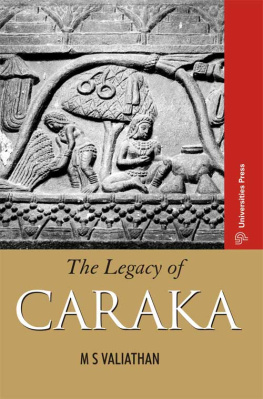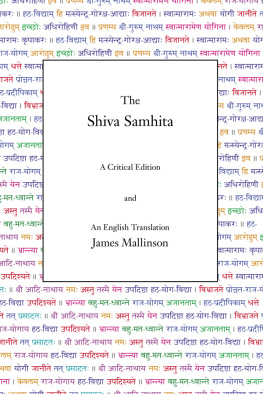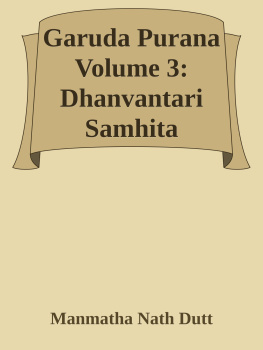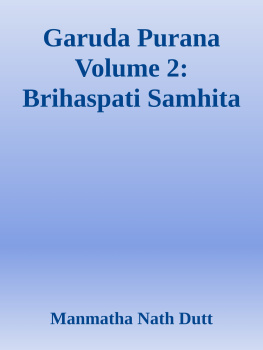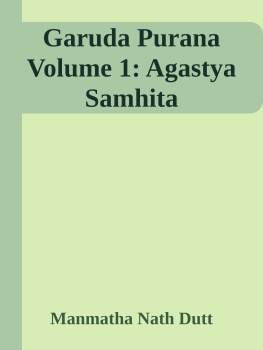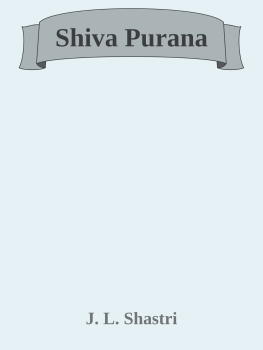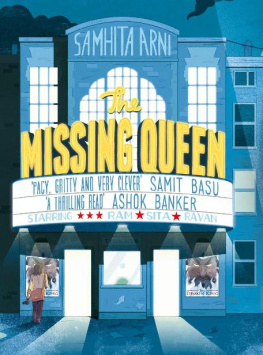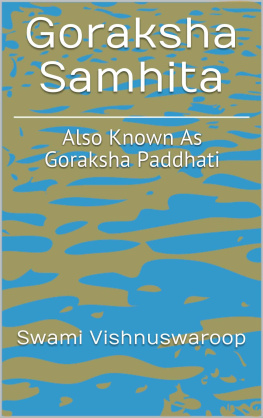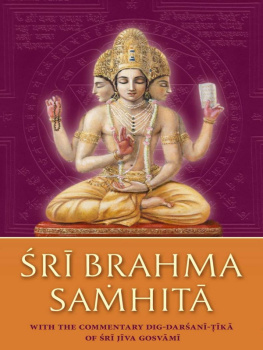The Legacy of
CARAKA
For our entire range of books please use search strings "Orient BlackSwan", "Universities Press India" and "Permanent Black" in store.
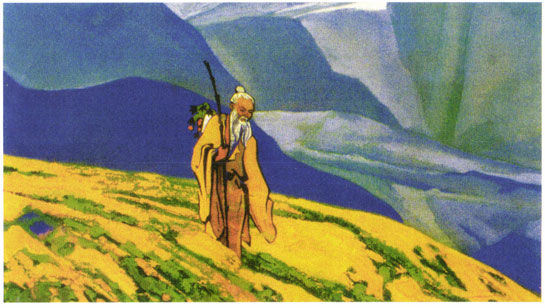
Caraka on the trail of 'Himalayan plants by Nikolai Roerich
Universities Press (india) Private Limited
Registered Office
3-6-747/1/A & 3-6-754/1, Himayatnagar, Hyderabad 500 029 (A.P.), INDIA
e-mail:
Distributed by
Orient Blackswan Private Limited
Registered Office
3-6-752 Himayatnagar, Hyderabad 500 029 (A.P.), INDIA
Other Offices
Bangalore, Bhopal, Bhubaneshwar, Chennai,
Ernakulam, Guwahati, Hyderabad, Jaipur, Kolkata,
Lucknow, Mumbai, New Delhi, Noida, Patna
Universities Press (India) Private Limited 2009
First published by Orient Blackswan Private Limited 2003
Reprinted 2003, 2004, 2006
First Universities Press impression 2009
Reprinted 2011
eISBN 978 81 7371 854 0
Frontispiece: Caraka on the trial of Himalayan Plants' by Nikolai Roerich (Courtesy Bharat Kala Bhavan, Banaras Hindu University)
e-edition:First Published 2013
ePUB Conversion: .
All rights reserved. No part of this publication may be reproduced, distributed, or transmitted in any form or by any means, including photocopying, recording, or other electronic or mechanical methods, without the prior written permission of the publisher, except in the case of brief quotations embodied in critical reviews and certain other noncommercial uses permitted by copyright law. For permission requests write to the publisher.
To the memory of
my parents
Transliteration chart

Preface
This book had its origin in the Gandhi Memorial Lecture I was privileged to give at the Raman Research Institute, Bangalore. I had heard of Caraka from my school days but to read his Samhit many years later was to come under the spell of a master physician whose contribution to India's cultural inheritance was profound. I was tempted to retell Caraka Samhit in a format which, I thought, would appeal to the students of yurveda, medicine and other sciences at the college level and all others interested in the history of science in India. The hesitation I had in an yurvedic excursion was overcome by the encouragement I received from Sri Raghavan Thirumulpad - a renowned savant of Kerala - who never spared himself in guiding me during my two year journey through Caraka country In the large body of Caraka literature I consulted, the commentary of Cakrap i and translation by Prof PV Sharma were of utmost help to me. However, instead of adhering to the sequence of Sthnas in the original, I have retold the Samhit through thematically structured chapters which, one hopes, would be easier on modern readers. The retelling has involved some degree of restructuring and condensation but has ensured that whatever is stated can be traced back to the original and that no chapter in the eight Sthnas of the original has been left out. In the introduction, I have commented on some aspects of Caraka's philosophy concepts and practice which could be of interest to the academic community in the present context.
I am grateful to Dr PM Unnikrishnan of the Foundation for Revitalisation of Local Health Traditions, Bangalore for reading my manuscript and not only suggesting emendations and refinements but also assisting in the preparation of a glossary Professor KV Sarma, whose studies on ancient science texts in Sanskrit are models of scholarship, has laid me under an obligation by making an index for this volume. It is a pleasure to acknowledge the assistance of Dr Indira Balachandran of the Arya Vaidya Sala, Kottakkal for checking the botanical names of plants (see Botanical Names). The identification and terminology of plants mentioned by Caraka are beset with great difficulties and any errors which persist are entirely mine. I am grateful to Mr Abraham Joy for preparing the illustrations and drawing inspiration for his work from the carvings of the Kuna period when Caraka is believed to have lived. The rich collection of photographs of the sculptures of the Kuna period in the American Institute of Indian Studies, Delhi, provided the material for introducing authenticity into the drawings of Mr Joy. For estimating the number of references to various disorders, I was generously supplied a digitised version of the Caraka Samhit by Prof Yamashita of the Kyoto University. My sincere thanks are due to him and to my daughter and a pathologist, Manna, who carried out the computer search for references. I am indebted to Prof PSVN Sharma of the Kasturba Medical College, Manipal for facilitating my search for modern psychiatric resonance in Caraka's description of insanity. I must also place on record a debt of gratitude to my family who have ungrudgingly stood by me through my busy surgical decades and subsequent digressions into unrelated territories.
I was honoured by the Homi Bhabha Council who awarded me a Senior Fellowship, and would convey my sincere thanks to the Trustees for their support. I am beholden to Dr Ramdas M Pai, President of the Manipal Academy of Higher Education for the facilities given to me for carrying out the study in Manipal. It is a pleasure to extend my sincere thanks to Ms Usha Kamath for preparing the manuscript with great care and admirable efficiency, and Ms. Padmaja Anant of Orient Longman Private Limited for her editorial thoroughness and excellence. If the book succeeds in drawing wider attention to the theme of Caraka's legacy, its pages will have amply rewarded one of my best hopes.
M S Valiathan
An appreciation
A good book or piece of writing should give reading pleasure and, at the same time, light a spark to trigger new lines of thought. The introduction in the present volume has, in my view, met both these criteria. I am also persuaded that any unbaised reader would share my impression. Having studied and taught Caraka Samhit for many years and practised yurveda in the traditional style, it has been my experience that various misconceptions have clouded the public understanding of yurveda. The present study, I believe, would clear many faulty notions and brighten the path for the students of Caraka Samhit. As an old physician reared in the gurukula system, I have no doubt that Dr Valiathan owes his understanding of yurveda to considerable diligence.
Authoritative texts of yurveda, in general, have laid greater emphasis on the practical side of medicine. Caraka Samhit, on the other hand, has given a philosophical slant to medicine and sought to evaluate even therapeutic procedures in philosophical terms. This is precisely why a study of Caraka Samhit is indispensable to grasping the true significance of yurveda which is a science rooted in philosophical soil. Addressed to the modern reader, this book represents a novel and admirable attempt to present Caraka's teaching faithfully, unburdened by explanation or interpretation. To accomplish this task, Dr Valiathan has employed the combined resources of a scholarly background, familiarity with Sanskrit, intensive training in science and modern medicine and an inquisitive mind. Free from preconceived ideas, he has reached out to the original text and not stopped at the secondary level of books and commentaries on Caraka. The direct style of
Next page
